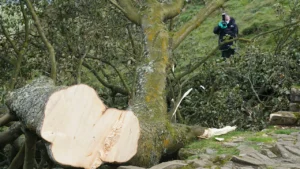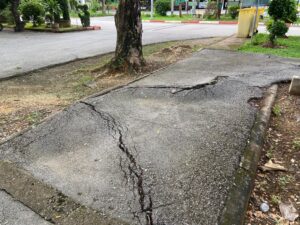Tree removal can be a costly service, especially if you’re dealing with a large or hazardous tree. Fortunately, there are opportunities to have trees removed for free, often through barter systems where wood is exchanged for the removal service. This guide outlines the step-by-step process for finding free tree removal services in exchange for wood, helping you navigate the complexities and criteria involved. The process usually starts with identifying your reasons for needing the tree removed, ensuring you qualify for free services, and finding the right individuals or organizations willing to remove the tree in exchange for the wood. From assessing barter terms to planning the removal day, this guide covers everything you need to know to safely and efficiently manage the tree removal process.
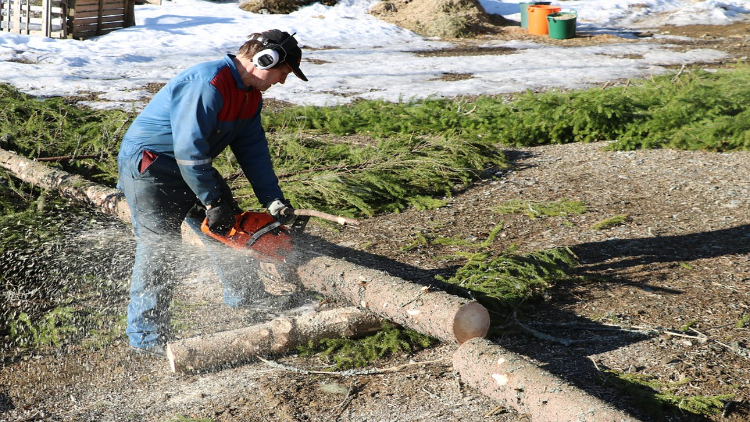
1. Identify Why You Want the Tree Removed
The first and most critical step in seeking free tree removal services is understanding and articulating why you need the tree removed. Valid reasons can significantly increase your chances of qualifying for a free service. Some common reasons include the tree posing a safety risk, such as with hazardous species like the Manchineel tree, which is highly poisonous and dangerous to handle without professional expertise. Similarly, dead, diseased, or storm-damaged trees that threaten to fall on structures, power lines, or public spaces often qualify for removal due to their potential hazards.
Additionally, trees located on public or city-owned land adjacent to your property might be eligible for removal by municipal services if they pose a risk to the public. Understanding your reason for removal will help you better communicate with service providers and local authorities, ensuring that you meet the criteria for free services. It’s also crucial to verify any local laws or regulations concerning tree removal on your property to avoid potential legal issues.
2. Establish Whether You Qualify for Any Free Tree Removal Services
Once you’ve identified your reasons for tree removal, the next step is to determine if you qualify for free services. Free tree removal is often available to certain groups, such as the elderly, veterans, or individuals with disabilities who may struggle to manage the removal themselves. However, even if you don’t fall into one of these categories, you can still qualify based on the nature of the tree and its location.
A valid removal reason, such as a hazardous or diseased tree, can often suffice as a qualification. Additionally, you should check whether your local regulations permit the removal of the tree, as certain trees may be protected by law to prevent deforestation or preserve the environment. It’s essential to consult with your local municipality or a certified arborist to understand your rights and the legal framework before proceeding with the removal.
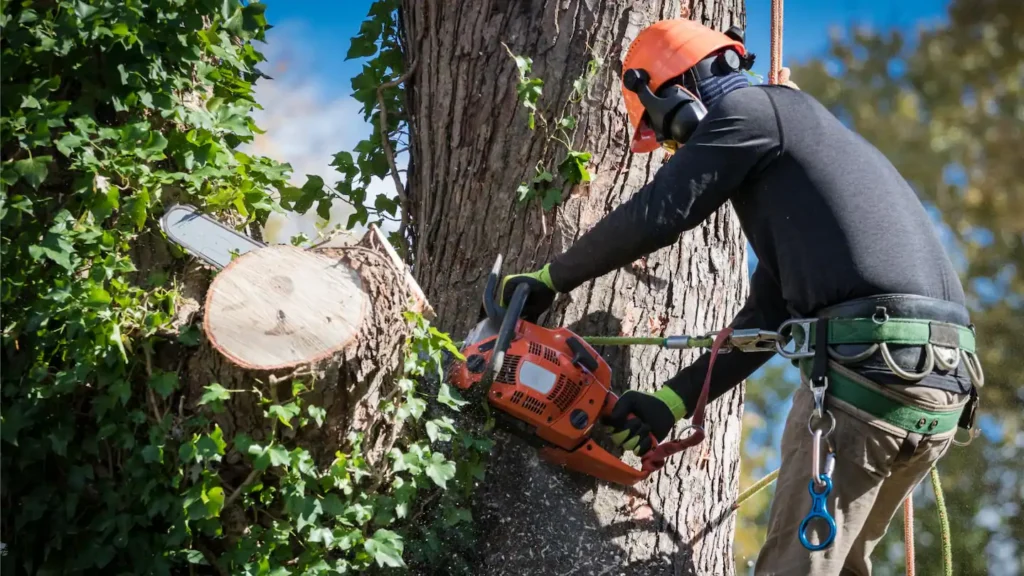
3. Look for Anyone Who Removes Trees for Free
Finding individuals or organizations that offer free tree removal services can be challenging but not impossible. Start by researching local tree removal companies; some may have programs or offers for free removal in exchange for the wood, especially if the tree species is valuable. Certain types of wood are highly sought after and may incentivize loggers to offer their services for free. Here are some of the tree species that are often valuable enough to attract free removal services:
- Kingwood: Known for its durability and striking appearance, Kingwood is often used in high-end furniture and fine woodworking projects.
- Western Red Cedar: Prized for its natural resistance to decay and insect damage, Western Red Cedar is commonly used in outdoor construction and crafts.
- Swietenia Mahogany Wood: A highly desirable hardwood with a rich color and fine grain, Mahogany is frequently used in premium furniture, cabinetry, and musical instruments.
- Ashwood (Fraxinus): Valued for its strength and elasticity, Ashwood is popular for tool handles, sports equipment, and furniture making.
- Oakwood (Quercus Variety): Known for its hardness, durability, and classic grain patterns, Oak is a staple in furniture making, flooring, and construction.
- Black Cherry Wood: With its beautiful color that darkens with age and fine, straight grain, Black Cherry is highly sought after in furniture and cabinetry.
- Dalbergia (Species of Rosewood): Renowned for its rich hues and strong, fragrant properties, Rosewood is used in fine furniture, veneers, and musical instruments.
These tree species are highly desirable resources, and if you need any of them removed due to safety concerns or other reasons, you can usually find certified experts willing to perform the work for free in exchange for the valuable wood. Additionally, having multiple trees that need removal can further incentivize loggers or other interested parties to offer their services, as it becomes more worthwhile for them to engage in the exchange.
By targeting these specific types of wood, you can increase your chances of finding a free tree removal service that benefits both you and the provider.
4. Find Out Whether the Free Service Uses a Barter System
Before agreeing to any free tree removal service, it’s important to confirm whether the service provider operates on a barter system. Some providers may offer free removal in exchange for the wood, which they can then use or sell. Understanding this aspect upfront helps set clear expectations and avoids misunderstandings. If the service provider is a private individual, such as a neighbor or a local handyman, ensure they are clear about what they expect in return for the service. Some may simply want firewood, while others might intend to sell the wood for profit.
5. Agree on the Terms
Once you’ve identified a service provider, it’s crucial to agree on the terms of the arrangement. This can include the specifics of the barter agreement, such as the amount of wood they will take and any cleanup responsibilities. For more formal arrangements, consider drafting a simple written agreement to outline the terms clearly. This protects both parties and ensures that there are no disputes later on. Even in informal situations, like dealing with a neighbor, having a mutual understanding of the terms is essential.
6. Plan the Tree Removal Day
Planning the tree removal day is an important step to ensure everything goes smoothly. Coordinate with the service provider to select a day that works for both parties. Make sure the area around the tree is clear of obstacles and that there’s minimal activity in the vicinity for safety reasons. Tree removal can be noisy and potentially dangerous, so it’s best to schedule it at a time when it will cause the least disruption. Additionally, plan to be present during the removal to oversee the process and provide any necessary assistance.
7. Have Your Tree Removed
The final step is the actual removal of the tree. Ensure that the service provider has all the necessary safety equipment and that they follow proper safety protocols throughout the process. Watching the tree removal allows you to address any immediate concerns and ensure that the job is completed as agreed. After the tree is safely removed, make sure the area is cleared of debris, and that the service provider has fulfilled their part of the agreement regarding the wood.
By following these steps, you can navigate the process of securing free tree removal services in exchange for wood, ensuring a safe and mutually beneficial outcome for both you and the service provider.
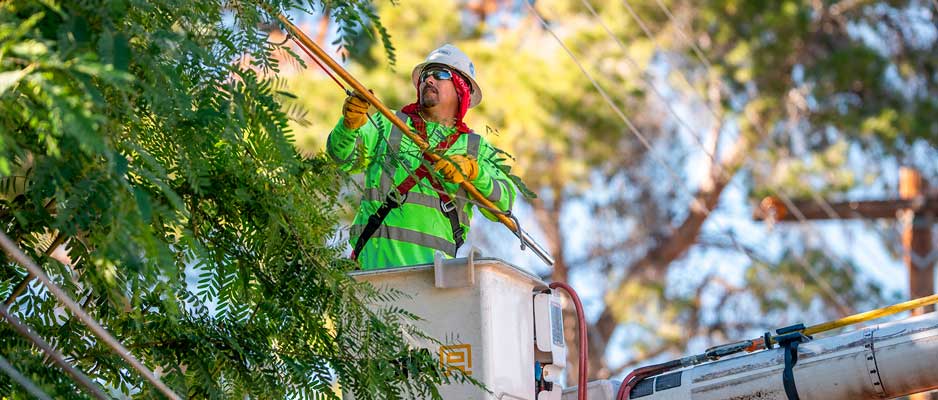
Where to Look for Free Tree Removal in Exchange for Wood Services
Besides the seven steps outlined earlier, there are various programs and services available that can help you find free tree removal options, potentially reducing the cost of removing damaged or unwanted trees from your property. Here’s a breakdown of specific avenues to explore:
1. Free Tree Removal for Seniors
- Community Support: Many tree removal companies offer programs specifically designed to help seniors, providing free services as a way to give back to the community.
- How to Find: Search online using terms like “free tree removal for seniors near me” or inquire at local community centers or senior assistance programs.
- Eligibility: Check the specific age limits and qualifications, as these can vary between providers.
2. Free Tree Removal for Veterans
- Veteran Appreciation: Some companies offer free tree removal services to veterans as a sign of appreciation for their service to the country.
- How to Find: Contact local tree removal companies or veteran support organizations, and explore veteran resource websites for additional options.
- Considerations: Ensure you have proof of service to qualify for these benefits.
3. Tree Removal Assistance Programs
- General Assistance: These programs assist a wider audience and don’t always require membership in a specific group. They recognize the high cost and difficulty of tree removal and provide aid accordingly.
- Eligibility Criteria: Programs often have specific criteria but are generally accessible. Directly contact them or check local government resources for more information.
- How to Find: Ask neighbors, friends, or use community boards. You can also do a quick search online for “tree removal assistance programs near me.”
4. Charity Tree Removal
- Charity Involvement: Charities involved in environmental conservation or community services often provide free tree removal. They might accept wood as a donation if it aligns with their needs.
- How to Find: Look for local charities or non-profits focused on environmental or community work, or check local directories for such services.
- Barter Possibility: Some charities might take wood in exchange if it supports their other charitable activities.
5. Free Tree Removal for Disabled Residents
- Disability Support: Many programs offer free tree removal specifically for disabled residents, aiming to assist those who may struggle with such tasks.
- How to Find: Reach out to local disability support organizations, community groups, or municipal offices that may offer these services.
- Exchange Options: If applicable, offering wood in exchange can be a gesture of gratitude, though it’s often not required.
Summary Table: Free Tree Removal Services at a Glance
| Program Type | Eligibility | How to Find | Exchange Requirements |
|---|---|---|---|
| Seniors | Age criteria may apply | Search online, local senior centers | Not usually required |
| Veterans | Proof of military service | Contact tree companies, veteran organizations | Not usually required |
| Assistance Programs | Varies by program | Local government, online search | Possible wood exchange |
| Charity Tree Removal | Community need focus | Local charities, non-profits | Possible wood exchange |
| Disabled Residents | Proof of disability | Disability support organizations, local groups | Not usually required |
By using this guide, you can explore multiple pathways to secure free tree removal services that best match your situation. Always verify the specific requirements and terms of each option to ensure a smooth and mutually beneficial arrangement.
Government Grants for Tree Removal
If you don’t qualify for free tree removal services through the previously mentioned programs, you might be eligible for government assistance. Many local and state governments offer grants for tree removal, particularly when safety is a concern. To access these funds, you will need to apply for a tree removal grant and meet specific criteria. The likelihood of receiving a grant often depends on the urgency and nature of the tree removal, such as whether the tree poses a significant risk to public safety or property. If your situation qualifies as urgent, such as preventing potential accidents from hazardous trees, your chances of securing a grant improve significantly.
The Hazardous Tree Removal Program
Several government-funded programs are specifically designed to address hazardous tree removal. These programs aim to eliminate dangerous or poisonous trees from residential areas, making communities safer. For example, trees that are hazardous due to disease, decay, or toxicity, like those containing poison throughout their structure, can be removed under these programs at no cost. In these instances, barter options, such as exchanging wood for services, may not apply due to the dangerous nature of the tree. Most counties should have a hazardous tree removal program in place to protect public safety and manage environmental risks effectively.
Free Tree Removal in Your Area
Finding free tree removal services can also be as simple as looking within your local area. Conducting a quick online search or asking around your neighborhood can reveal organizations, companies, or individuals who offer these services in exchange for wood. Potential sources include:
- Logging Companies: They often provide free removal if the tree species are valuable, such as hardwoods that can be sold for lumber.
- Tree Services and Landscapers: Some may offer tree removal in exchange for the wood, especially if it’s a sought-after species.
- Local Handymen or Lumberjacks: Individuals with the skills and tools for tree removal might be interested in trading their labor for firewood.
- Utility Companies: They might remove trees that interfere with power lines or other infrastructure at no cost to you.
Neighbors who use wood for heating might also be willing to help remove a tree in exchange for the firewood, making it a mutually beneficial arrangement.
Companies That Cut Trees for Free (In Exchange for Wood)
Companies that offer free tree removal services in exchange for wood are typically logging or utility companies. Logging companies are interested in acquiring certain wood species and may provide free removal if the tree’s wood is of significant value. Utility companies, on the other hand, will remove trees that obstruct service lines or pose risks to utility infrastructure. However, logging companies usually prefer clients who have multiple trees or specific, high-value species to ensure the wood obtained justifies the service provided.
How to Negotiate Tree Removal
Negotiation is a key skill when seeking tree removal services, whether you’re aiming for a free service or trying to reduce costs. By learning how to effectively negotiate, you can secure the best possible deal. Consider factors such as:
- Type of Tree: Trees that provide valuable wood might allow you to negotiate a better deal or even free removal.
- Ease of Removal: Highlighting the simplicity or accessibility of the job can help reduce costs.
- Number of Trees: If you have multiple trees, offering them as a package deal can incentivize companies to provide a discount or free service.
Offering the wood from the removed trees to the service provider can also be a powerful negotiating tool, making it more appealing for them to lower the price or waive it altogether.
Navigating the process of finding free tree removal services is not as challenging as it might seem. With the right approach, whether through government programs, local companies, or effective negotiation, you can find reliable service providers who will remove your trees in exchange for wood.
Frequently Asked Questions About Free Tree Removal in Exchange for Wood
1. What types of trees are usually accepted for free removal in exchange for wood?
Typically, trees with valuable wood, such as Oak, Mahogany, Cedar, Ash, Cherry, and Rosewood, are often accepted for free removal because of their high demand and market value.
2. How can I find companies that offer free tree removal services in exchange for wood?
You can start by searching online for local logging companies, tree services, or utility companies. Additionally, asking neighbors or checking community boards can help you find potential service providers.
3. Are there any eligibility requirements for free tree removal services?
Eligibility requirements vary by provider. Some services are limited to seniors, veterans, or disabled individuals, while others depend on the type of tree, its condition, and the potential value of the wood.
4. Can I get a hazardous tree removed for free?
Yes, hazardous trees that pose safety risks, such as those that are dead, diseased, or dangerously leaning, may qualify for free removal through government programs or private companies interested in the wood.
5. What should I do if no companies near me offer free tree removal?
If no companies provide free removal, consider contacting local charities, environmental groups, or government assistance programs that might offer support or suggest alternatives, such as barter arrangements.
6. Is it necessary to sign a contract for free tree removal services?
While not always required, it’s advisable to have a written agreement detailing the terms of the removal and wood exchange. This protects both parties and ensures clear understanding of the arrangement.
7. Can I negotiate the terms of free tree removal services?
Yes, negotiation is possible. You can discuss factors like the type of wood, the number of trees, or ease of access to secure a better deal or ensure fair terms for both sides.
8. What happens to the wood after the tree is removed?
Typically, the company or individual performing the removal will take the wood to use or sell. It’s important to clarify beforehand whether any wood will be left for you to keep.
9. Are there any costs involved in free tree removal services?
Generally, if the service is truly free, there should be no costs involved. However, always confirm with the provider to ensure there are no hidden fees for disposal or additional services.
10. Can I offer additional trees for removal to increase my chances of getting free service?
Yes, offering additional trees, especially if they are valuable species, can make the service more worthwhile for the provider. Multiple trees increase the amount of wood available, making the exchange more appealing.

